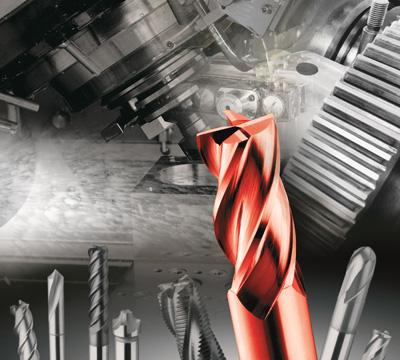
DiaMill HEF 1100 from oelheld is a high-performance product based on hydrocrack oils. It has nearly no odor, has high shearing stability, is extremely resistant to aging, and is physiologically safe (no aromatic content). DiaMill HEF 1100 does not contain chlorine or any heavy metals. Its good viscosity/temperature relationship guarantees maximum flushing and cooling properties over a wide temperature range.
High-performance additives with guaranteed maximum pressure absorption, in combination with interfacial active substances, allow for high cutting speeds and excellent surface finish. Tool life is considerably increased while the formation of a built-up cutting edge is effectively prevented.
Its extremely low tendency towards vaporization and misting results in a high level of safety during use and also in high profitability. This product is not aggressive towards varnishes and elastomers. DiaMill HEF 1100 has a high flash point, greater than 302° F (150° C), even with its low viscosity.
DiaMill HEF 1100 is reportedly the ideal alternative to water-soluble cooling lubricants for turning, milling, drilling, hobbing and cutting operations in CNC machining centers. DiaMill HEF 1100 is especially designed for use with high alloyed steel, cast iron or nonferrous metals.
Contact Details
Related Glossary Terms
- centers
centers
Cone-shaped pins that support a workpiece by one or two ends during machining. The centers fit into holes drilled in the workpiece ends. Centers that turn with the workpiece are called “live” centers; those that do not are called “dead” centers.
- computer numerical control ( CNC)
computer numerical control ( CNC)
Microprocessor-based controller dedicated to a machine tool that permits the creation or modification of parts. Programmed numerical control activates the machine’s servos and spindle drives and controls the various machining operations. See DNC, direct numerical control; NC, numerical control.
- flash
flash
Thin web or film of metal on a casting that occurs at die partings and around air vents and movable cores. This excess metal is due to necessary working and operating clearances in a die. Flash also is the excess material squeezed out of the cavity as a compression mold closes or as pressure is applied to the cavity.
- gang cutting ( milling)
gang cutting ( milling)
Machining with several cutters mounted on a single arbor, generally for simultaneous cutting.
- milling
milling
Machining operation in which metal or other material is removed by applying power to a rotating cutter. In vertical milling, the cutting tool is mounted vertically on the spindle. In horizontal milling, the cutting tool is mounted horizontally, either directly on the spindle or on an arbor. Horizontal milling is further broken down into conventional milling, where the cutter rotates opposite the direction of feed, or “up” into the workpiece; and climb milling, where the cutter rotates in the direction of feed, or “down” into the workpiece. Milling operations include plane or surface milling, endmilling, facemilling, angle milling, form milling and profiling.
- turning
turning
Workpiece is held in a chuck, mounted on a face plate or secured between centers and rotated while a cutting tool, normally a single-point tool, is fed into it along its periphery or across its end or face. Takes the form of straight turning (cutting along the periphery of the workpiece); taper turning (creating a taper); step turning (turning different-size diameters on the same work); chamfering (beveling an edge or shoulder); facing (cutting on an end); turning threads (usually external but can be internal); roughing (high-volume metal removal); and finishing (final light cuts). Performed on lathes, turning centers, chucking machines, automatic screw machines and similar machines.

